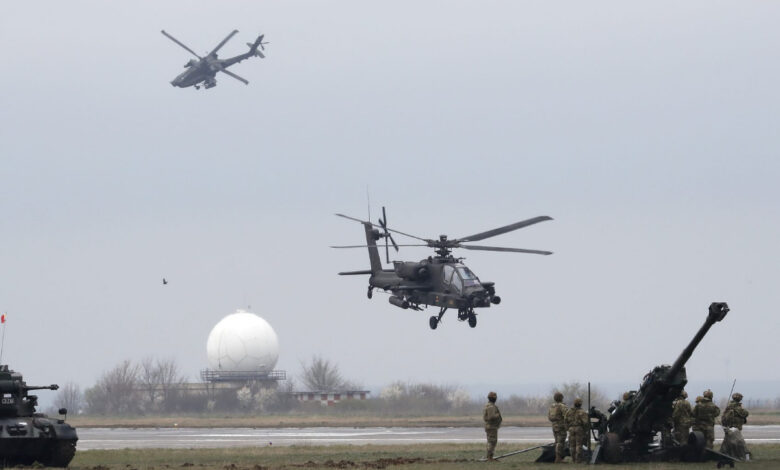Romanian village to transform into NATO’s largest European airbase


Romanian village to transform into NATO’s largest European airbase
- NATO army, air force, and naval personnel from 32 countries will rotate through the newly established military city.
- The base is located just 20km from the Black Sea coast.
- NATO jets avoid unnecessary encounters with the Russians.
Six RAF Eurofighter Typhoons sit on the taxiway, their engines roaring on two, while ground staff hurry about, adding the finishing touches before takeoff.
In the distance, the summer haze reveals a cloud of dust rising over the construction site of the second runway, 3.5km (2 miles) long, beside the first. The hot northerly wind buffets both the new and old hangars.
The Mihai Kogalniceanu (MK) airbase, named after the nearby village that honors a 19th-century liberal politician, is now becoming the largest NATO base in Europe, surpassing even Ramstein in Germany.
Russian President Vladimir Putin justified his war in Ukraine by claiming that NATO is encroaching on Russia’s European flank. In response to his invasion, NATO has moved more pieces forward on the chessboard.
A squadron of Romanian F-16s, recently purchased from Norway, along with MQ-9 Reaper drones, will soon be stationed at the MK base. NATO army, air force, and naval personnel from 32 countries will rotate through the newly established military city.
The latest arrivals are the Finns. Located just 20km (12 miles) from the Black Sea coast, the base is 300km from Odesa and 400km from Sevastopol in Russian-occupied Crimea, as the fighter flies. RAF pilot Flt Lt Charlie Tagg is on his third and final tour of duty here.
“There’s a much bigger US presence here, a lot more infrastructure, accommodation, people and equipment.”
He says Russia’s invasion of Ukraine has changed both the areas he flies over and the strategic posture of the mission. In 2021, during his last tour, NATO fighter pilots flew far out over international waters in the Black Sea. Now, they stick to the 12 nautical mile zone above Romanian and Bulgarian territorial waters “to avoid misunderstandings and escalatory situations with the Russians.”
“Previously we were here as a deterrence to any Russian aggression. Now it’s more as a reassurance to other Nato countries, such as Romania, that we are here and willing to defend.”
He says there has been no need to intercept a Russian plane since he arrived, though there were such incidents on previous missions over the Baltic.
“They will just be blundering through – it’s not against any international law, they are entitled to do that. But we’ll put an aircraft next to that adversary aircraft. From a posturing point of view, it shows the Russians… that we are active. We’re flying with armed jets, so it sends a clear message.
“And it also provides valuable intelligence for us, we’re recording serial numbers of aircraft, and the weapons that those aircraft are carrying, so it feeds into the whole intelligence picture.”
Late at night at the British compound on the MK base, he watches the war unfold in neighboring Ukraine on his radar screens.
“We could see Shahed drones going into Odesa. The heat sources on the ground, where the weapons are impacting, to radar feeds that are tracking aircraft, both friendly and not so friendly. So it is quite surreal.”
While NATO jets avoid unnecessary encounters with the Russians, two known incidents have occurred over the Black Sea. In September 2022, a Russian pilot misunderstood a command from ground control and narrowly missed shooting down a British intelligence-gathering plane with a crew of up to 30.
In March 2023, a Russian SU-27 “Flanker” jet deliberately brought down a US MQ-9 Reaper drone, flown from Romania, over international waters.
Source link
